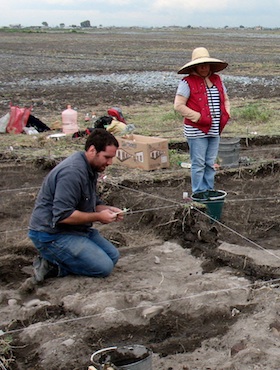Losing One’s Head at the Harvest…
Back in January, the GSU homepage featured a story about Anthropology/Archaeology Professor Christopher Morehart’s discovery of a remains from human sacrifices at an excavation site in the northern Basin of Mexico. Dig deeper into his research – read the published article:

Morehart, C. T., Peñaloza, A., Sánchez, C., de Tapia, E., & Morales, E. (2012). Human sacrifice during the Epiclassic Period in the northern basin of Mexico. Latin American Antiquity, 23(4), 426-448.
“This article examines changes in ritual practices during the Epiclassic period in central Mexico. It presents data recovered from recent excavations of a shrine discovered in Lake Xaltocan in the northern Basin of Mexico. Pottery and AMS dates place the construction and use of the shrine in the Epiclassic period. The shrine was first built during or soon after the collapse of the Teotihuacan state. With the decline of Teotihuacan and the emergence of competing centers, ritual practitioners began human sacrifice: the remains of over 30 individuals were documented, including 13 complete severed crania. This practice suggests conflict as the political landscape became decentralized. Despite how broader processes may have affected behavior, the shrine, ritual practice was fundamentally local. We present archaeobotanical evidence of offerings of food, incense, and flowers that elucidates the microlevel nature of ritual at the shrine” (Morehart et al., 2012, p. 426).
We have the print version the journal issue in which this article appears in the Current Periodicals on Library North 1st floor. For previous print and online issues, see here.